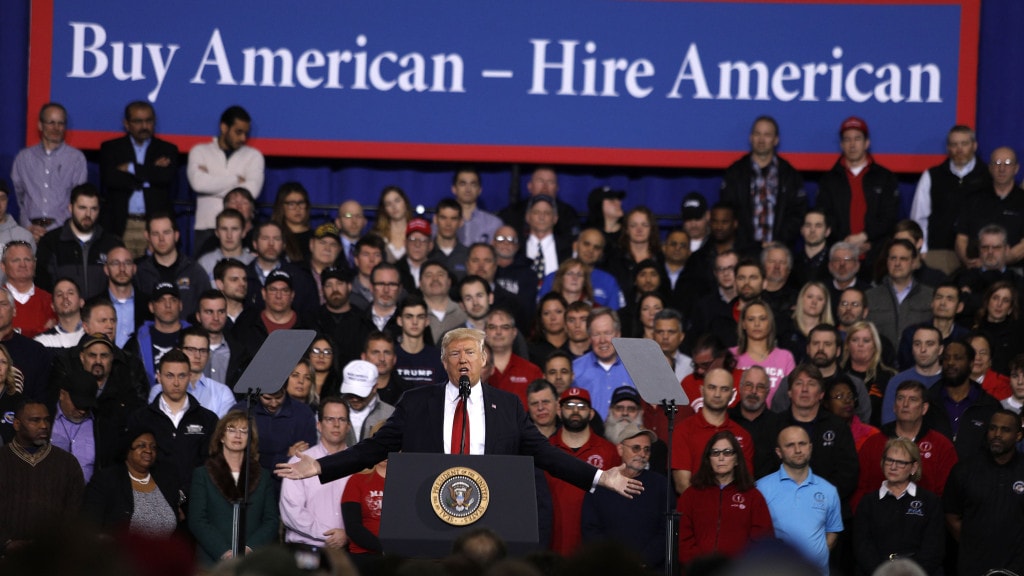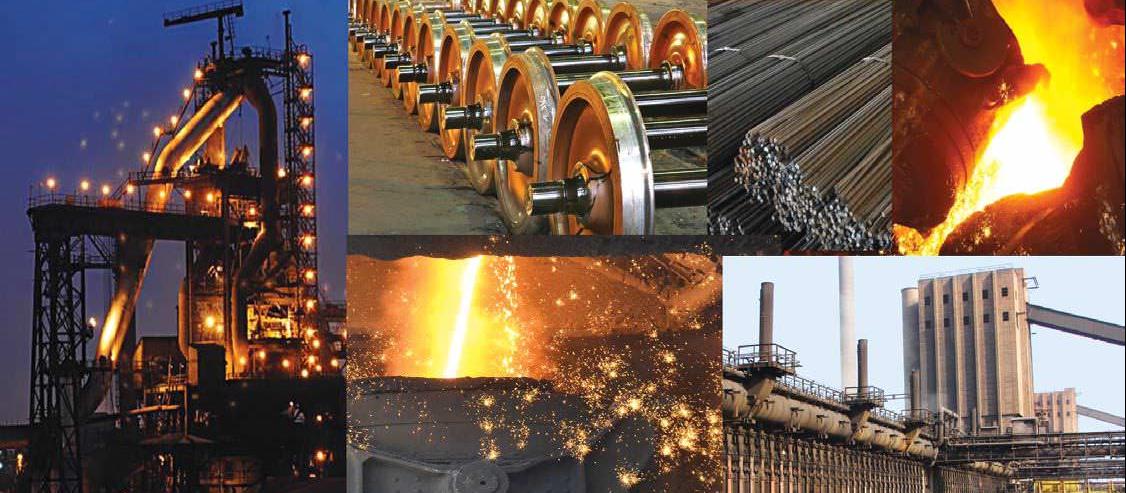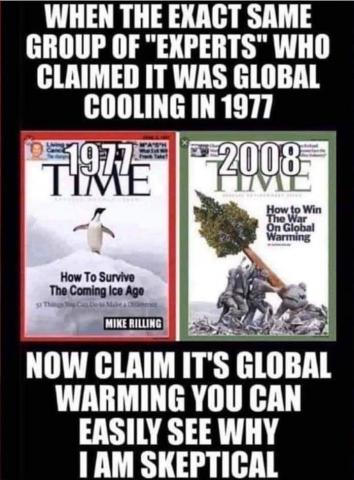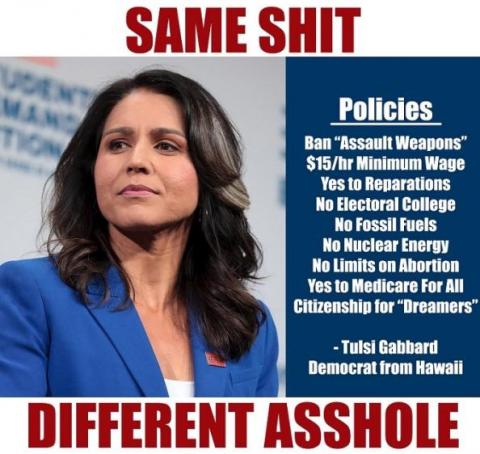With a few years of data in the books, it's amazing to see how bad Obama was for the economy when compared to President Trump. This is not breaking news for us business owners, especially if you've been self employed through a few presidential administrations (I started my first company towards the end of the Clinton administration), but it's interesting to compare an anti-business president to one that's very much pro-business.
Because Trump has demonstrated extreme competence and ability, economic pundits with no business experience who have spent years spinning for Obama are rightly embarrassed and desperate to credit Obama for Trump's success. The irony is they agree Trump is doing things differently than Obama, but with their premise of Trump continuing Obama's economy, Trump should be failing. The data clearly shows Obama's economy was dying until being rescued and nursed back to health by President Trump.
Obama was not a fan of business and in fact has disdain for free-market capitalism (not for him, but for us). Fact: Obama is a Marxist community-organizing academic politician. Academia and the private sector have always been on opposite sides of the fence because academics don't have to produce anything, and their lifestyles aren't dependent on being right and making the right decisions. Economy pundits sprout from academia and carry with them the same disdain for business as Obama, as he displayed here in 2012:
A good president for the economy should have some business experience and at least a minimal amount of respect for the small business community. Obama has neither and it's reflected in the data. Because I've heard economic pundits with a straight face say Obama left a healthy economy for Trump, I'm highlighting these points that should easily support such a narrative:
- Small business optimism
- Capital spending (new equipment, facilities, trucks, and stuff that increases production)
- GDP (how stable is the economy and how is it growing?)
- Employment (can people who want to work find a job?)
- Manufacturing (manufacturing is the heartbeat of the economy)
- Energy production (can we sustain ourselves and export to trading partners?)
- Business friendliness (how restrictive are business-stifling regulations?)
Small business optimism was poor under Obama, soars under President Trump
Small business confidence is a good place to start when comparing Obama and Trump. According to the pundits, business owners during Obama's administration were optimistic because Obama clearly had the economy running like a high-performance engine. However, the data tells a completely different story. Confidence was low, and the nanosecond Trump's victory was a certainty and the realization that a pro-business president won the election, optimism shot up and spread like a wildfire through the business world. These three charts quantify that optimism:
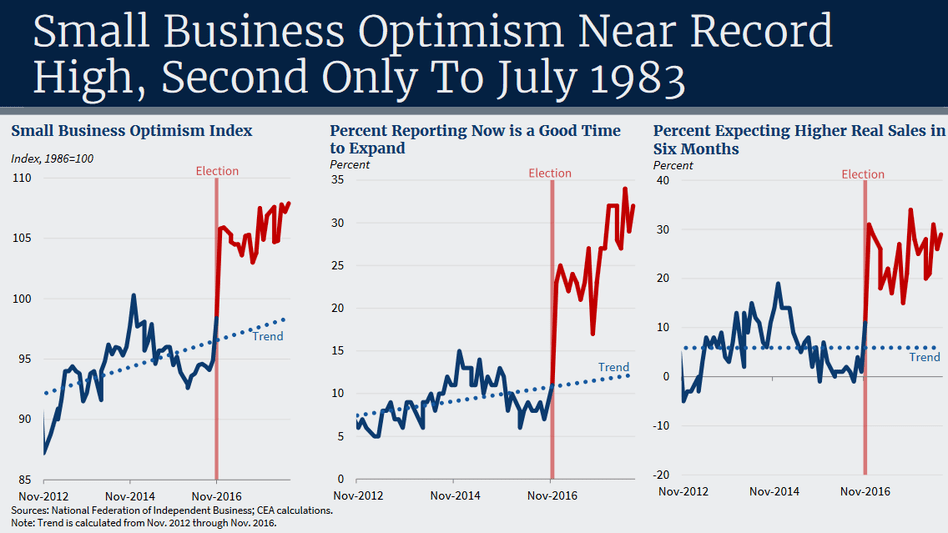
Optimism is critical to the economy because it dictates business decisions at a visceral level. If we're not confident then we hunker down for the storm. If we believe the environment will be friendly to business, we'll have more confidence to spend money for growth. At the end of Obama's term business owners were not optimistic, yet Obama pundits credit the surge in confidence to him; the data reveals this narrative to be a myth.
Capital spending was tight under Obama, but booming under President Trump
I can't express enough how the psychology of an incoming pro-business president was the spark that ignited current economic wildfire. Capital spending drives the economy because the businesses instantly become buying customers to their vendors, and those vendors start making money and must fulfill those orders. To accomplish this, they need to hire workers and ramp up their operations to where they become customers to their vendors, who then must spend money, and so forth.
Incredibly, most economic pundits and academics don't believe capital spending kick starts the economy. They believe "government investment" does this, where government will invest in this industry, and that technology.
Capital spending fueled with optimism spins up an economic tornado that takes on a life of itself and sucks in consumer spending that circulates dollars through the economy. To sell products to your customers you need to be able to manufacture the products. To make the products you need machines, equipment, or whatever capital goods are required for production. To acquire these goods, you need to buy them. To buy them, you need to spend money. To spend money, you need to have confidence that you will be able to sell the products and get a return.
Under Obama, businesses weren't spending money; under Trump, it's been a capital investment boom:
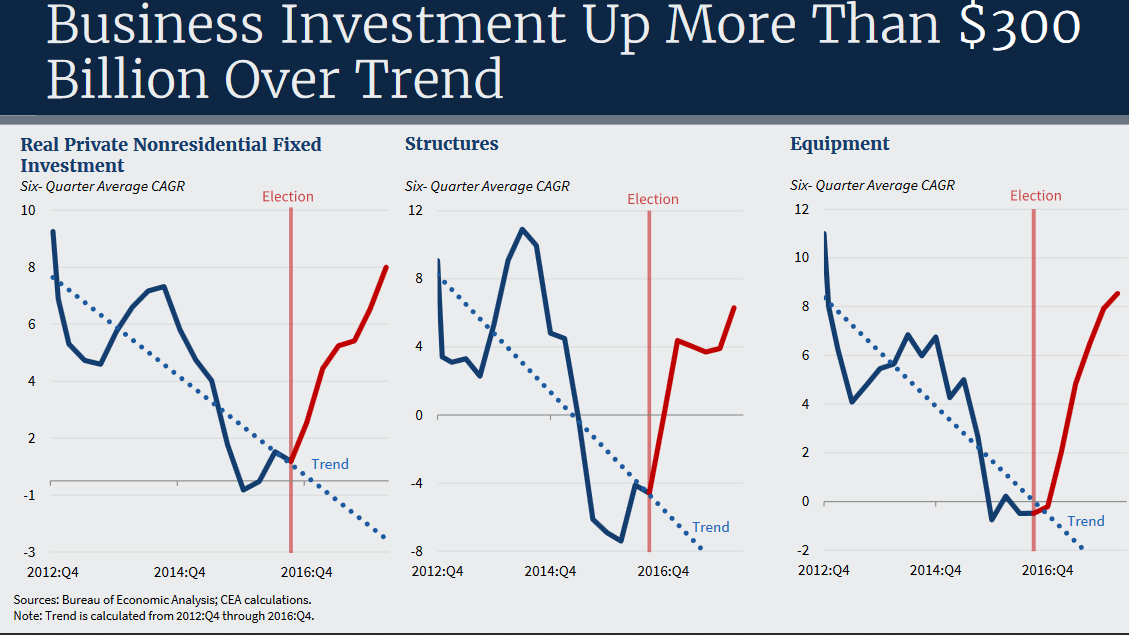
Pundits say this surge in capital spending is because of the hot market Obama left for Trump, yet the data shows that businesses were waiting for a break of sunshine through the dark clouds; once there was that break on election night it's been off to the races.
Obama is the only president with no year of 3% GDP growth. Trump has already accomplished this
GDP is a good measure of the health of the economy. It crunches government spending, net exports, capital spending, and consumer spending into a number that represents the change in growth from the previous quarter, and annually from the previous year. An annual growth rate of 3% is healthy and indicative of a humming economy.
Barack Obama is the only president in history to have never hit 3% growth for a year. This fact alone makes the case of him being a good president of the economy laughable. President Trump's economy attained 3% growth in his first full year.
This chart below shows the GDP growth through the Obama administration up to Friday's amazing first quarter number of 3.2%. Take note of how choppy the economy was under Obama. Heavy anti-business regulations, Obamacare, horrific banking policy, and other anti-free market factors wrecked economic havoc.
I added business confidence over the chart, represented by the dotted line, to highlight the horrible economy Obama handed off to Trump. See how confidence is high, and how steady and smooth economic growth has been after Trump took over? Take into consideration the end of the Obama administration and immediately after the election. What changed literally overnight? Notice how the small business confidence is in line with economic health? The psychology of how a president views small business is a major factor in terms of how the economy behaves. The confidence of small business sparked this hot economic growth.
The Obama team's outlook on GDP was 2% is the new normal. President Trump proved that to be false:
For whatever reason, be it Obamacare in 2010 that cast a very heavy blanket of regulations and taxes on U.S. businesses or the avalanche of regulations the Obama Administration layered on American business, real GDP growth rates never exceeded 3 percent for any year of his presidency for the first time in modern American history.
Real GDP growth under President Obama averaged 1.9 percent annually for his presidency. If you take out the first 2 years and give Obama the benefit of the doubt since 2009-10 clearly was a result of previous economic policies and mistakes and give him some credit for the 2017 growth rates even though a lot can be attributed to President Trump’s election, average real GDP growth on a seasonally adjusted basis under Obama was only 1.64 percent annually from 2011-17.
Manufacturing jobs were flat under Obama but flooding back under Trump
Manufacturing is critical to our country. To be strong, we must be independent and sustain our national security needs, produce our own food, and other basics like supply materials for infrastructure. A strong manufacturing base gives us the means to support ourselves. To maintain this independence, labor and investment are required. As our country has lost independence and become a country that doesn't make anything, manufacturing jobs have left. Businessman Ross Perot addressed this in the 1992 debates:
Over the past few administrations, horrendous trade deals have decimated our manufacturing base. Jobs fled to Mexico, and China has used the United States as dumping ground for products like steel, making it impossible for our manufacturers to compete. In this clip, Obama shows he has no idea how to renegotiate such trade deals and how manufacturing jobs aren't coming back:
This is where business owners point to that statement and ask how the guy who said the jobs weren't coming back gets the credit for their return. Here's another statistic: in the last two years of Obama's term, he added 60k manufacturing jobs. In the first two years of Trump's term, President Trump added 491k manufacturing jobs -- a 714% increase.
Another point on Obama's statements, he asks how Trump is going to bring jobs back, and how he's going to negotiate deals. This highlights Obama's inability to accomplish these, while Trump already has, yet pundits tell us how Obama is a better negotiator. The guy who didn't know how to do it is not better for the economy than the guy who does. Obama promised he'd renegotiate NAFTA multiple times but never had the ability to do so. Even if he wasn't weak, America's interests were not his priority to even attempt.
Trump did what Perot talked about in 1992 by using tariffs as a tool to apply pressure, scrapped NAFTA, and replaced it with the new USMC deal on the table for Congress to finalize. After the deal passes, the tariffs won't be necessary for Mexico and Canada and markets will open up for U.S. farmers.
President Trump also reigned in China. For years they've been taking advantage of Canada and Mexico to dump product on the US. Think of it this way: if you have a product you manufacture and sell for $1, but China decides to dump millions of a product similar to yours into the US markets for 10 cents, how are you going to compete? This is essentially what China has been doing, through NAFTA, but President Trump put an immediate stop to it.
Manufacturing data shows how the economy is coming back strong. One example are capital goods orders. Capital goods are a factor of production that are used to produce goods and services, such as manufacturing equipment, dump trucks, tools, fork lifts, and so on.
Steel production, the backbone of our country as President Trump calls it, is coming back strong:
Obama did not create manufacturing jobs. Instead, he drove manufacturing into the ground. Trump rescued it and brought it back to life.
Employment
Job loss was so bad during the Obama administration that it had to stop including people who gave up on finding a job in the labor force numbers. This helped keep the unemployment rate artificially low while people touted a "recovery"; this was anything but a recovery.
The topic of the unemployment rate is difficult to argue with people who believe man and cow farts warm the planet and believe there's more than two genders. Therefore, we have to approach this from a different perspective. The horrible labor force participation rate (LFPR) has been a thorn in the side of pundits, so they try and explain it away with reasons like old people are dropping out of the work force. The following chart shows the LFPR over job vacancies, where apparently old people are suddenly becoming younger:
Job vacancies were lower, along with the LFPR, under Obama. Under Trump, the job vacancies have increased because of the expansion of business, drawing previously uncounted workers back into the work force. This labor demand has been tougher for business, but it's a good problem to have. The demand has been good for wages.
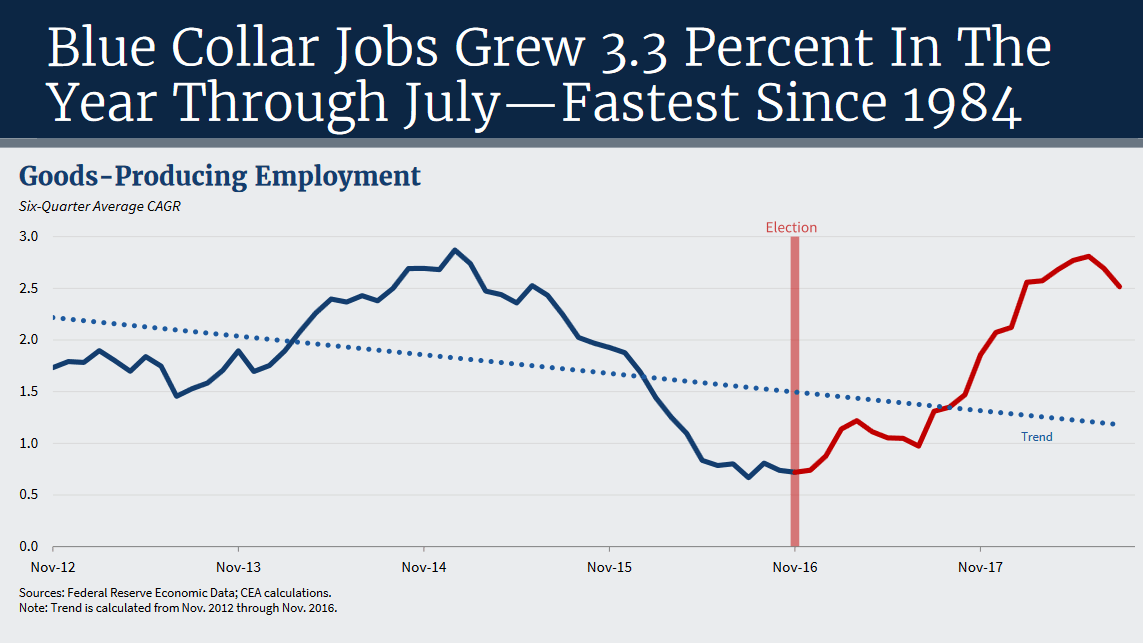
People gave up looking for work under Obama, but returning to the workforce under Trump.
Obama strangled business with regulations, while Trump has been reducing them
Obama's war on business involved massive regulations under the guise of the man made global warming scam. Trump has been slashing those job-killing regulations at a ferocious pace:
For the first time since the American Action Forum (AAF) began tracking final regulations published in the Federal Register (going back to 2005), federal agencies published net regulatory cost savings for a calendar year. AAF research found that in 2018 federal agencies finalized 324 regulations with estimated costs, savings, or paperwork impacts (the criteria for tracking on RegRodeo.com) resulting in cost savings of $7.8 billion. The agencies added 9.9 million hours of paperwork.
Rulemaking activity increased notably in the second year of the Trump Administration, following the trend of other recent administrations. The reason for this increase is straightforward: In its second year, an administration has more personnel in place and can advance rules begun in year one. The difference for the Trump Administration is that a significant portion of regulatory activity this year was deregulatory.

President Trump has experience with construction. Unlike politicians who have never done or built anything, he knows what it's like to try to get a project approved and understands how regulations kill business. Removing the chains of regulations is another reason the President has a hot economy that Obama admittedly strangled.
Energy production under Trump has skyrocketed
The United States is now the largest producer of oil and gas, opening up ANWR which estimates yield 10.4 billion barrels of oil, killed Obama's fracking restrictions (which were tied up in court, but now dead), neutered the Clean Power Plan, and sold the largest gas and oil lease in history at $1 billion. The Trump administration had to put the brakes on offshore drilling because an Obama-appointed judge blocked it. Even with Obama gone, the fight against his anti-business and anti-energy policies continues with activist judges he appointed.
Here's how Obama approaches energy policy:
Obama himself admits he's not a fan of free-market energy production that produces tons of jobs. Trump's policy, however, is energy dominance:
President Trump didn't give much of a shout-out to American Energy in his first State of the Union address Tuesday night. Two sentences was all we got: "We have ended the war on American Energy -- and we have ended the war on beautiful clean coal. We are now very proudly, an exporter of energy to the world."
He didn't need to say much. The first year of Trump’s quest for American energy “dominance” proved to be a humdinger and will be hard to top. Trump started by ordering expedited final approvals for the Keystone XL and Dakota Access Pipelines. He withdrew the U.S. from the Paris Climate Accord. And rescinded the Obama Administration’s Clean Power Plan. He scrapped the Waters of America rule, which would have put onerous regulations over the energy and ag industries. He supported opening a sliver of the Alaska National Wildlife Refuge to drilling and directed the Dept. of Interior to end the moratorium on coal leases in Federal lands. Just last week the administration moved to protect the handful of remaining U.S. solar cell manufacturers (most notably Tesla’s SolarCity division) but hurt installers by enacting tariffs on imports of Chinese PV panels.
What’s he got to show for it?
A lot. American oil production is surging, with drillers set to hit a record 10 million barrels per day, surpassing a 1970 record and on par with Russia and Saudi Arabia. Exports of crude oil and petroleum products has exploded 20% in a year to more than 7 million barrels per day. Natural gas production has also hit a record of more than 93 billion cubic feet per day. While wind power has risen to surpass hydropower as America’s biggest renewable power source. It was even a good year for coal miners, who had their best up-year amid a decade of steep market share losses, with no end in sight.
"President Trump's first year in office has been revelatory," said billionaire Harold Hamm, in a statement earlier this month. His Continental Resources (NYSE:CLR) has been avidly exporting its shale oil abroad, "allowing oil buyers to avoid patronizing hostile regimes."
Conclusion
The Trump economy is hot because of President Trump's policies and is reflected in business optimism, capital investment, GDP growth, manufacturing jobs, and energy policy. Obama is one of the worst economic presidents in history while President Trump is bound for Mt. Rushmore.
The only way to credit Obama for the Trump economy is if you factor in the confidence of Obama no longer in office, and failing at an attempted coup, leaving Trump in office to continue the streak.
